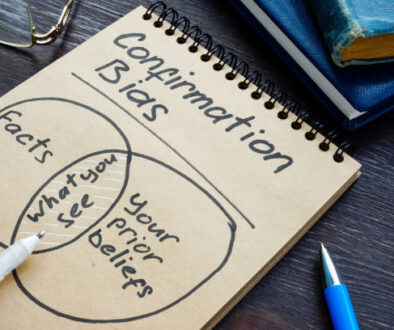Communicating Effectively
Menanteau Serfontein – 30 July 2021
“Just because the means of communication are readily available doesn’t mean that people have learned to communicate well.” ~ Dale Carnegie
“Communication works for those who work at it.” ~ John Powell
“Communication is a skill that you can learn. It’s like riding a bicycle or typing. If you’re willing to work at it, you can rapidly improve the quality of every part of your life.” ~ Brian Tracy
“The most important thing in communication is hearing what isn’t said.” ~ Peter Drucker
“The most important things to say are those which often I did not think necessary for me to say — because they were too obvious.” ~ André Gide
All of us communicate in one form or another numerous times each day and we don’t always realize the importance of developing the skills of effective communication. I trust that this Article will encourage you to continue developing your communication skills and that the principles and practical advice below will assist you in doing so.
Principles of Effective Communication
The key criterium to assess the extent to which your communication has been successful is to ensure that what you communicate and the way you go about it, will result in your audience understanding your message in the same way that you intended them to understand and receive it.
In order to achieve the above outcome, below are the principles of effective communication that should be adhered to:
- Clarify the purpose (goal) of the communication and the message that you need to put across. This could dictate what the content should be, the sort of language to be used and which method (or combination of methods) of communication should be used.
- Clarify who your audience is that will be receiving the communication.
- Choose which method (or combination of methods) of communication to use. The method of communication is one of the key factors in determining the extent of the effectiveness of your communication. (Methods of communication are dealt with under the heading “Methods of Communication”.)
- Plan all aspects of your communication. If it is a simple, straightforward message, the planning will usually be swift. The more complex, important and sensitive the communication is, the more in-depth the planning will have to be. “It usually takes me more than three weeks to prepare a good impromptu speech.” ~ Mark Twain
- The style, approach, tone and language have to be tailor-made for your audience.
- Even a stern message such as asking recipients who have broken certain rules to adhere to the rules, should always be communicated in a courteous, respectful and dignified.
- Avoid acronyms and technical terms that might be unknown to some of your audience, or could be misinterpreted.
- Ensure that the content of the communication/message that you wish your audience to receive and understand is explicit (i.e. it must be directly and clearly stated and leaves no doubt what it means) – there must be no ambiguity.
- Where appropriate, provide reasons for the message you are communicating.
- All the details need to be covered clearly, but it should be as concise as possible.
- Anticipate the questions that the audience might have and deal with it proactively in the content of your communication.
- Carefully plan the timing of your communication. If it is too late or too early, there could be consequences.
- Put yourself in the shoes of the audience, stand back and ask yourself whether what you have written will be clearly understood by your audience and make changes if necessary.
- If time permits, ask someone else to read your draft communication with fresh eyes and to tell you whether they think that the audience will understand what you intended – then make adjustments.
- In the case of important, complex and sensitive topics, the ideal is to consult with two or more individuals about all of the above to ensure that you haven’t missed anything and to help you to improve the written draft communication that you have formulated.
- Your message should align with the way that things are done in practice, i.e. is it consistent with the way that you and others behave and act? The message should not contradict the example that you and other key individuals are setting. Ralph Waldo Emerson says “Who you are, is speaking so loudly that I can’t hear what you’re saying.”
- Invite Questions and Feedback which will help to ensure that what you intended to communicate is clarified and to assess the extent to which there is understanding.
Methods of Communication
The most common methods of communication are:
- Verbal
- Written
- Visual
- Non-Verbal
- Listening (Listening is a key element of communication that will be dealt with in a separate Article.)
After you have clarified the purpose (goal) and the content of the message as well as who your audience is, the method (or combination of methods) of communication should be chosen. The importance of selecting the most appropriate method(s) of communication, is often underestimated. Sometimes people would choose to use written or visual communication methods when verbal communication would be much more effective and vice versa. Even in the case of ordinary, “run of the mill” matters, one should make a deliberate decision what method(s) to use.
Verbal
Verbal communication in the form of a face-to-face meeting or a telephone call, is usually a better option when you need a two-way conversation and when, in the case of a sensitive issue, there is a need to provide reasons, background information and to use and assess nuances.
Other factors to consider include the nature of the issue to be discussed, e.g. the extent of the complexity or sensitivity involved and whether the communication should be formal or informal.
Other forms of verbal communication can also be used, depending on the purpose/goal, e.g. voice note through various media, video, podcast, in-person meetings in a room, meetings on digital media such as Zoom, etc.
Verbal communication has definite advantages, but it also has its drawbacks such as people in the audience not hearing and understanding the message in the same way (inconsistency). Another factor is that there would not necessarily be a written record of what was said, which could create confusion.
Written
Written communication is well suited for getting a message across without an immediate need for reaction/feedback, i.e. when it is merely putting across a message. Written communication is also better when it not possible to get your audience together for verbal communication, or when it is important to have something in writing for the record and for future reference, or when it is a legal issue such as a contract or opinion on an important matter.
If written communication is the preferred option, then the form of written communication has to be determined, e.g. e-mail, one or more forms of social media and other possible options.
Whether it is an email, a memo, a report, a social media post, a Tweet, a contract, minutes, etc, all forms of written communication have the same goal, i.e. to communicate something in a clear and concise manner. This objective is often not achieved. Some of the causes of written communication being ineffective include poor writing skills, which often lead to confusion and embarrassment and even potential legal jeopardy. An important thing to remember about written communication, especially in the digital age, is that the message lives on, perhaps in perpetuity. Therefore, ensure that your message is well written – poorly constructed sentences and careless errors create a bad impression and make you look bad; and secondly, ensure that the content of the message is something you want to promote or be associated with for the long haul.
Written communication can be time-consuming, but is extremely essential, especially in the case of formal scenarios which require approvals and that could have have legal implications – sometimes just one inappropriate word could change the meaning and interpretation of a sentence. Emails have ushered in a revolution in making written communication very fast and thus have become a preferred mechanism for sharing detailed information much faster than before.
Written communication has several advantages. It provides a record for referral and follow‐up and in addition, written communication is an inexpensive means of providing identical messages to a large number of people.
Visual
“A picture is worth a thousand words”. Your experience and common sense will provide you with the necessary wisdom to assess whether or not visual forms of communication would be helpful in respect of the message that you want to put across. Examples of visual communication include photos, videos, images, animation, colour, illustrations, graphs & charts, drawings, signs and logos. In some instances, suitable visual forms of communication could enhance your written communication substantially.
Non-verbal
Non-verbal communication refers to body language, such as facial expressions (e.g. smiling, frowning or nodding), gestures, posture (e.g. folding of arms), the extent of eye contact, hand movements, pitch and tone of voice and appearance. In addition, the example that we set, can communicate a huge amount of feelings and emotions. When people speak, their body language may sometimes say something different to what the words convey. A mixed message occurs when a person’s words communicate one message, while non-verbally, they are communicating something else.
We all think that our communication skills are good enough, but I trust that in reading this, you have been stirred to develop your communication skills even further. It will be worth it!
“To effectively communicate, we must realize that we are all different in the way we perceive the world and use this understanding as a guide to our communication with others.” ~ Tony Robbins






